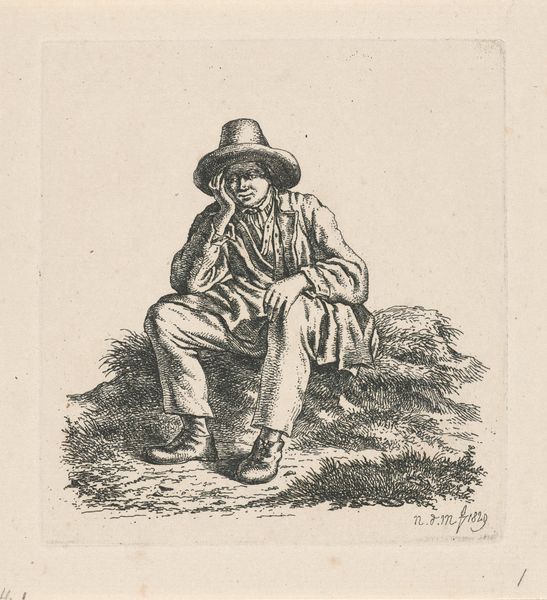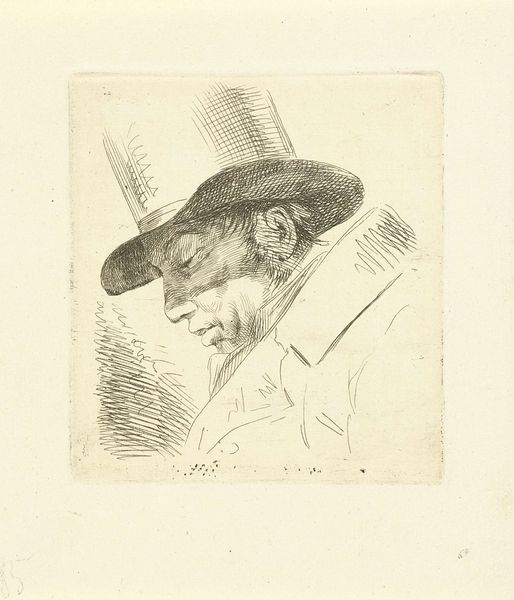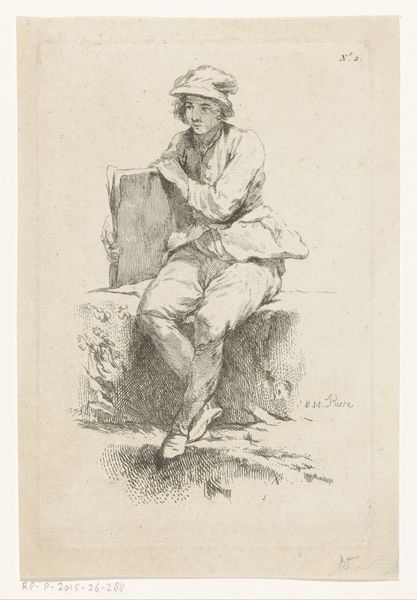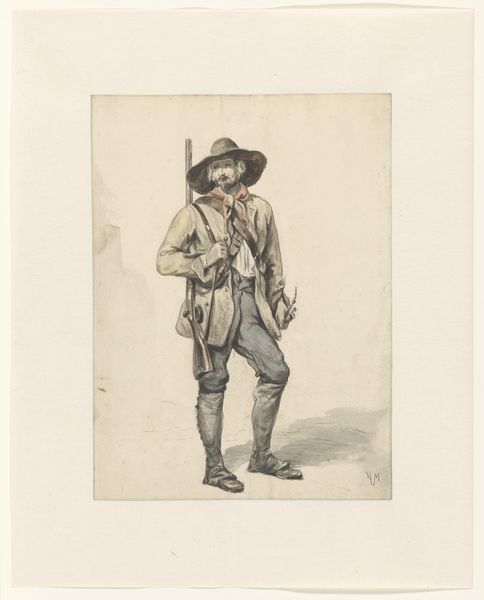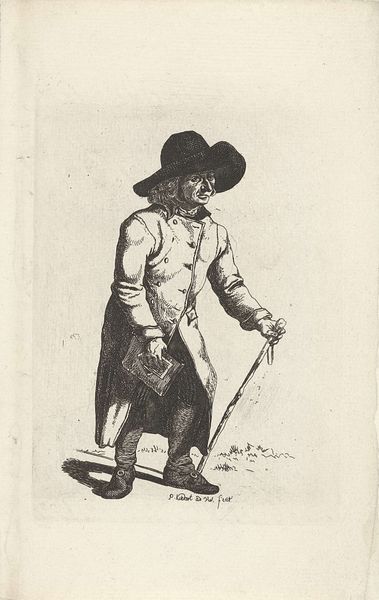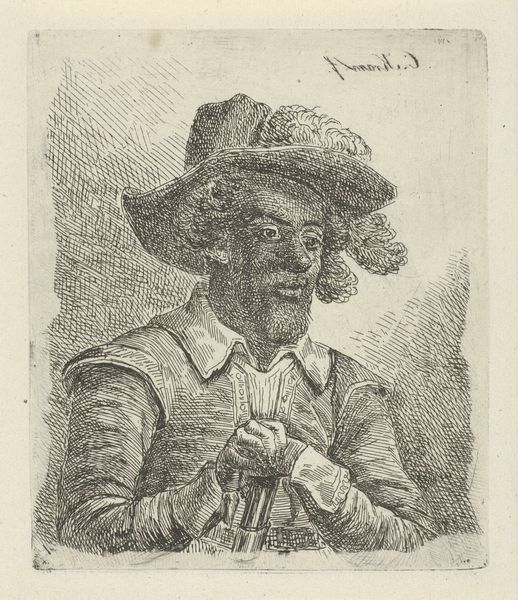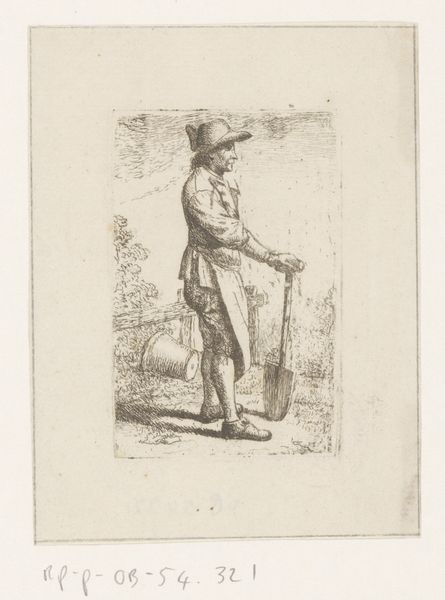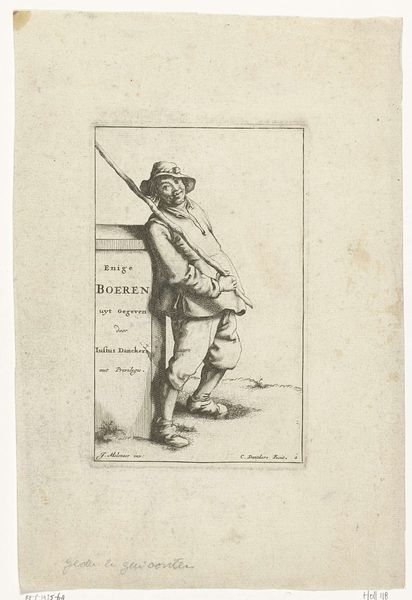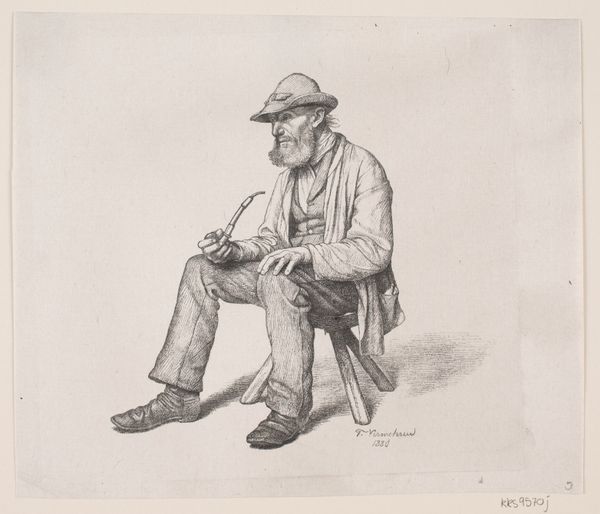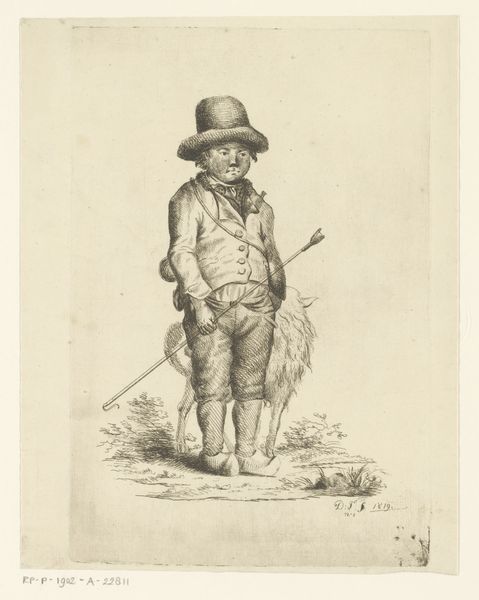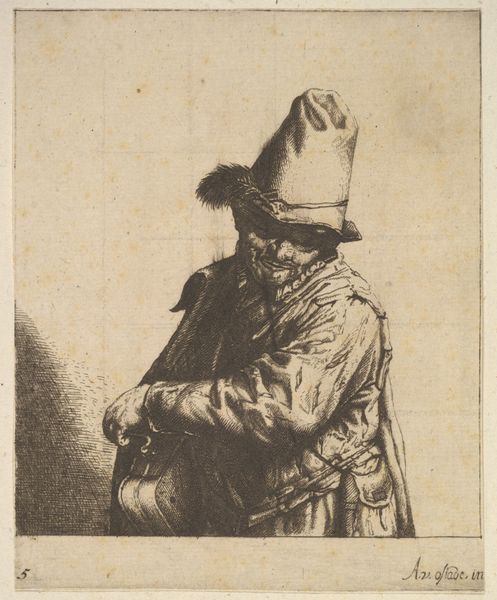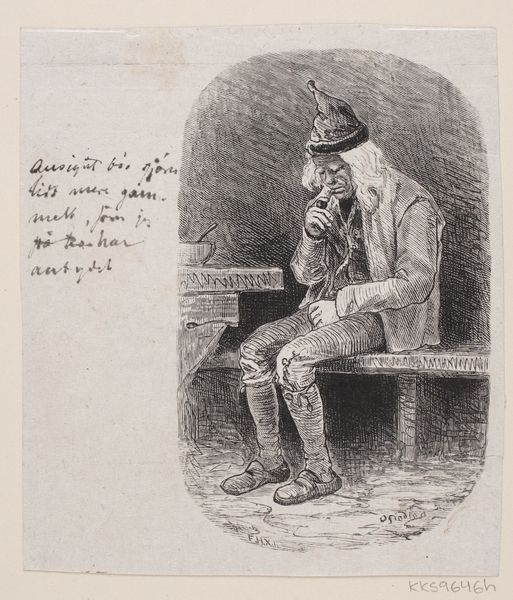
etching, engraving
#
portrait
#
etching
#
romanticism
#
genre-painting
#
engraving
Dimensions: height 88 mm, width 81 mm
Copyright: Rijks Museum: Open Domain
Editor: This etching, "Man met hoed met brede rand," or "Man with a Wide-Brimmed Hat," by Anthonie Willem Hendrik Nolthenius de Man, dating from 1803 to 1842, feels incredibly intimate. The subject’s downcast gaze creates a sense of melancholy. What cultural echoes resonate for you when you view this piece? Curator: I’m drawn to how the wide-brimmed hat functions, not merely as a piece of clothing, but almost as a shield, or a mask. Do you think it hides or reveals something about his inner state? Editor: That’s a wonderful question! It does create a sense of mystery. Curator: Think about the period. Romanticism favored the individual and their emotional experience. The man’s averted gaze might symbolize a retreat into the self, reflecting a deeper cultural trend. His face is heavily shadowed beneath the brim. Where do your eyes travel first in the image, and what draws you there? Editor: I initially focused on the face, trying to decipher his expression. Now, I notice the deliberate roughness of the lines, especially around the edges, versus the tight detail used for the eyes and brow. It does amplify the psychological weight. Is this effect deliberate? Curator: Indeed. The rough lines evoke a sense of the unfinished, of an unrefined, perhaps even troubled soul, common among the anti-heroes popular during this period, or common depictions of wandering peoples. It brings to mind ideas of personal struggle, reflection, perhaps even a commentary on societal expectations, which were growing rapidly at the time. Editor: I see. The hat isn't just a hat. And his averted eyes are telling a story, even in their avoidance. Thanks, I'll never see portraits the same way. Curator: And I think your attention to the detailed hatching reminds us of the technique required to produce the image in the first place, and by doing so to focus our attention more closely. I’ve learned from our discussion.
Comments
No comments
Be the first to comment and join the conversation on the ultimate creative platform.
